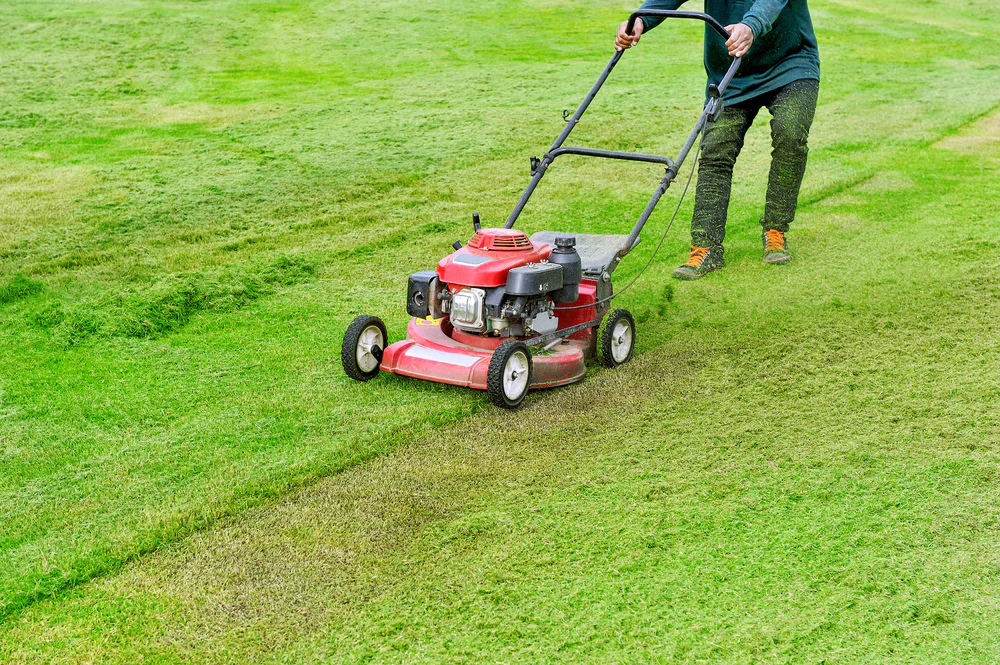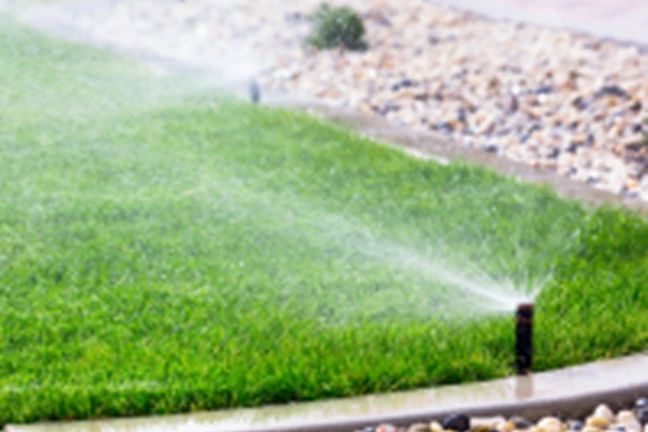What to Do After Scalping a Lawn in Summer?
Last Updated on June 16, 2025 by Duncan
When scalping, you should leave a significant portion of the grass blade untouched so that the grass can continue to absorb the sun’s energy. At the same time, you should scalp your lawn at the right time, usually in spring when the sun isn’t too hot.
If you cut the grass too short, you risk chopping off the grass blade completely, leaving brown-colored dead spots. You don’t want this, do you?
Unwanted scalping can also occur if your lawn has uneven levels or an accumulation of thatch on your lawn.
If you accidentally scalped your lawn in summer, there are several things you can do to make the healing process easy. These things include:
Water the lawn: Apply enough water to your lawn soon after clipping. This allows the grass to recuperate and promotes new growth. Water your lawn deeply, aiming for an inch (2.54 cm) of water.
While this is the case, avoid overwatering since this might result in shallow root development and other problems.
Fertilize the lawn: Use a balanced fertilizer to supply the nutrients required for healthy regeneration. Choose a fertilizer that is specifically designed for your type of grass and adhere to the manufacturer’s application rates and timing recommendations.
Biostimulation: The primary purpose of using biostimulants is to increase nutrient efficiency, strengthen the plant’s ability to endure stress (such as environmental stress), and optimize overall plant health.
If you are wondering what biostimulants are, these are microorganisms that accelerate plant growth. Using biostimulants in lawn care you don’t need fertilizers and pesticides, making it a more environmentally friendly and cost-effective strategy.
Weed control: Scalping can disturb the soil, creating ideal conditions for weed development. Keep an eye on your grass and treat any weed infestations right away. Consider using a pre-emergent pesticide to keep weed seeds from growing.
Tricks to avoid accidental lawn scalping
When you prevent lawn scalping, you ensure that your grass has the energy and nutrients it requires to thrive, resulting in a lush and healthy lawn.
Cut your lawn to the correct length.
Find out the optimal length for your lawn. This depends on the type of grass you have. In general, you should cut cool-season grass to 1 inch or longer, whereas you should cut warm-season grass to 2.5 inches or higher.
Before mowing, make sure your grass is about 3.5 inches tall so that you can only take one-third of the grass blade while leaving all of the critical nutrients intact.
Sharpen your lawnmower blade.
A dull lawnmower blade can rip and pull the grass, causing rips and weakening it. This leaf is also sensitive to fungus and a variety of grass diseases. Sharpen your lawn mower’s blade so that the grass cuts neatly, allowing your grass to recuperate and repair faster.
Mow in cooler weather.
Grass recovers faster from scalping in cold weather than in warm weather. This is because warm weather causes the moisture inside to evaporate, severely harming the grass blade.
Mowing is best done in the early morning or late afternoon, especially during hot weather. Mowing during the cooler parts of the day reduces stress on the grass plants, resulting in healthier and greener grass.
What you can do instead of lawn scalping
While lawn scalping can be beneficial in certain grass types and settings, it is not the only way to keep a healthy lawn. Consider the following alternate lawn-care practices:
Regular mowing: Sticking to a consistent mowing schedule at the proper height for your grass type can help avoid thatch buildup and maintain a dense, healthy lawn. Aim to remove no more than one-third of the grass blades during a single mowing session.
Mowing is, of course, appropriate for all grass types, but scalping is not, but it may not completely clear thatch or alleviate soil compaction.
Core aeration: This is the removal of small plugs of soil from the lawn to reduce soil compaction and increase air circulation, water penetration, and nutrient absorption.
This approach might help regenerate your grass without the need for scalping. While this is the case, it requires specialist equipment and may not be appropriate for all lawns.
Topdressing: This is basically the process of adding a thin coating of compost or soil mixture to the lawn’s surface. This helps to level the lawn, enhance soil quality, and promote healthy grass growth. Topdressing is particularly useful for lawns with uneven terrain or sparse spots.
What to do if you accidentally scalp your lawn
If you unintentionally scalped your lawn, there are several things you can do to save the situation. These things include:
Identify the scalped areas.
Identifying the scalped area may help you determine the root of the problem. For example, if it’s consistently scalped, you might have set your mower too low. If it just occurs in specific areas, the ground beneath your grass may be uneven in some places.
Water several times per week
Water your lawn softly but generously several times per week to revitalize it.
Add Topsoil.
If the scalping is caused by uneven land, add top-dressing and new grass seed to the affected areas to level the grass and the earth beneath it and prevent it from happening again.
Adjust your lawn mower’s settings.
After you’ve followed these recommendations, adjust your lawn mower blades to cut at the proper height for your grass. To prevent scalping from occurring again, you may have to change the blades for different portions of your grass.


